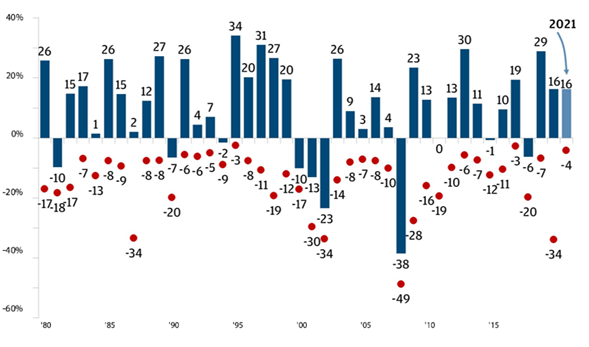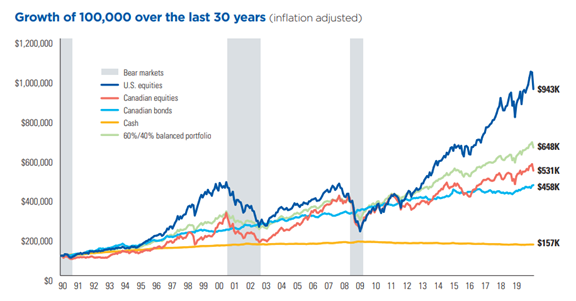This week, we take a look at some causes of the current instability and offer a long-term perspective on the subject.
This information will come handy when discussing clients’ questions on the impact of volatility on their investment plans.
| On the same subject, you can check out our last article about the stock market emotion cycle and the benefits of staying invested. |
Why such instability?
Many factors currently influence the volatility observed in the markets. The causes are complex, but can be summed up in three points for your clients.
- Inflation: Inflation has been on the rise for several months now. It jumped to 4.8% in December in Canada, a level not seen in 30 years. To contain it, central banks are planning rate increases. This will make borrowing less worthwhile, which should slow down the economy.
- Current events: The spread of the Omicron variant and the political tensions in Ukraine have created uncertainty in the markets. How long will Omicron and its variants impact the job market and the economy? What sanctions will be imposed on Russia in the event of an invasion of Ukraine? These are unanswered questions that fuel this instability.
- Drop in optimism levels: Stock prices have surpassed all-time highs in 2021. The current climate of uncertainty, however, has shaken investors' high expectations, which has caused optimism to fade in the markets. In addition, U.S. consumer confidence dipped.
Long-term perspectives for your clients
Market volatility and major downturns may push your clients to rethink their investment approach. However, the best advice you can give them is to learn from the most successful investors: stay the course despite the downturn.
Take the chart below from JP Morgan (January 2022) as an example to see the intra-year declines in the S&P 500 versus calendar year returns. Notice that despite average intra-year declines of 14.3%, returns have been positive 31 out of 41 years.

As Sebastien McMahon, Interim Chief Economist and Portfolio Manager, mentioned in his January 28 video, in a year or two, you may look back at the current situation and say: “this period was a good time to put some money at work, or at least, it was the worst time to get out of the market and sell”.
|
For your clients who prefer to invest over a period of time and reduce the effect of emotions on their investment choices, do not hesitate to offer them Dollar Cost Averaging (DCA). |
Ultimately, you are in the best position to actively advise your clients. The chart* below can help you show them how, time and time again, bear markets have always been followed by recoveries that exceeded previous highs.

Stay tuned! We will soon be back with some investment ideas to consider during volatile times.
*Source: Morningstar Direct, as at February 29, 2020. Returns are adjusted for inflation monthly using the Consumer Price Index (CPI) for Canada. U.S. equities represented by S&P 500 TR USD; Canadian equities represented by S&P/TSX Composite TR; Canadian bonds represented by FTSE Canada Universe Bond; 60%/40% balanced portfolio represented by 30% S&P 500 TR, 30% S&P/TSX Composite TR, 40% FTSE Canada Universe Bond; cash represented by FTSE TMX 91 Day T-bill.

